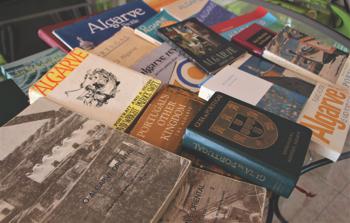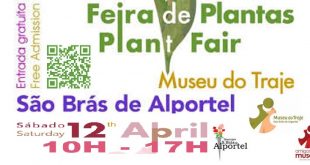Traveller: a kind of historian who goes in search of the identity of a group of people, undergoing different experiences, documenting them and learning from them; tourist: he who experiences products designed by the tourist industry, the “fast-food” version of the traveller.
Travel writing on the Algarve is full of travellers who feel the pulse of the land and its inhabitants, living with them and observing their lives without judgement. A. H. Stuart (1) writes: “the English tourist can be described as a person who travels for pleasure, experience and understanding. The tourist who fails to uphold the rules of polite society is a ‘traveller’, while those who maintain high standards of behaviour and travel by private plane, yacht — or even in a Rolls Royce — are usually elevated to the rank of ‘distinguished visitor’.”
The haste to differentiate the traveller from the tourist is addressed by Carminda Cavaco (2): “The modern tourist, travelling by plane, or even by car, travels rapidly and almost always with an indifference towards the land which lies between his preferred beaches. How many people spend their holidays in the Algarve without seeing the beautiful azulejos of the Igreja de São Lourenço in Almancil, or the “radiant” Manueline doorway of the Matriz de Monchique (…)?”
I like to think that I have been a traveller all of my life, no matter how far I am from home. Manuel Teixeira Gomes (3) himself spoke about the hardships of travelling to the Algarve when he was a child. The former President of the Portuguese Republic (1923-1925) took the train from Lisbon to Beja; he then travelled by stagecoach until Mértola; he went down the Guadiana in a steamboat until Vila Real de Santo António and then, from there on in, he took another stagecoach along the coast.
In 1941, Stuart provided valuable information for those who wished to go and explore the South: “(…) there are two good motor roads from Lisbon and in normal times the Sado and Southern railway, simple track, maintains a good service.” From Lisbon, travellers could choose between the train (express or normal service), car, bus or aeroplane (which landed on the Rio Arade within 1 hour and 15 minutes). From here, you could take a boat to Praia da Rocha, “the jewel of the Algarve”, according to Mário Lyster Franco (4).
For those who arrive by train, Stuart advises them to ask for a taxi in the hotel, as the “carrinha”, pulled by horses, is rather uncomfortable (although it is cheap — 1,50 escudos). By car, the trip costs around 15 escudos, and, by bus, 1,20 escudos. On the other hand, David Wright and Patrick Swift (5) suggest that “the people of the Algarve are not sufficiently sophisticated to understand that foreigners would pay more to experience a traditional, quaint form of transport.”
Praia da Rocha, “the most beautiful beach in the whole of Portugal” according to Gilbert Renault (6), “(…) is the only place in Algarve with hotels. There are two, both marked with three stars (…)” Stuart observes.
Over in Monchique, travellers were enjoying the walking trails from as early as 1894. “It is difficult to climb these steep slopes, made for the alpine foot of a strong tourist,” exclaims Julio Lourenço (7). “The path is taxing, with winding curves, meandering and stony, but it is always deliciously shadowed by the boughs of the chestnut trees and the old cork trees(…),” he says.
Many travelled by “carrinha”, says Dan Stanislawski (8), “the most elegant means of transport”, and Manuel Teixeira Gomes’ favoured way of getting around in the Algarve, according to J. Mimoso Barreto (9). It was a unique experience, in the words of Júlio Lourenço Pinto: “The native gives himself up calmly to this terrible instrument of torture, without showing any sign of suffering or impatience, with the impassivity of a fanatic indian that takes great pleasure in the ecstasy of the gruesome martyrs.” “The view is marvellous,” he continues, “and brightened by the coming and going of the carriages pulled by mules and mares, as in Alentejo, who add a lively, cheerful note to the picturesque panorama with their colorful canopies which resemble small moving tunnels.”
And how to describe the people that these tourists and visitors found there? In “Algarve – Le midi Portugais” (10), Suzanne Chantal speaks of an Algarve with a strong sense of community. This Algarve was uniquely documented by Artur Pastor. During an interview in the newspaper Barlavento (27 August, 2015), Artur Pastor (his son) says that his father “was always looking to capture that which is most traditional, most beautiful… He believed that the Algarve had great potential in terms of tourism, but argued that we needed to pay close attention to what was being done so as not to spoil the region. I think that he watched this process of concretisation with some sadness, without a doubt,” he recalls.

1 “Algarve”, A.H. Stuart, drawings Maria Keil do Amaral, SNI Books, Lisbon, 1941
2 “Geografia e turismo no Algarve. Aspetos Contemporâneos” – Carminda Cavaco, separata de Finisterra. Revista Portuguesa de Geografia, Vol. IV – 8, Lisboa, 1969
3 Manuel Teixeira Gomes – uma vida entre dois séculos”, Manuel Filipe Canaveira, Edicarte, Câmara Municipal de Portimão, Lisboa, 1999
4 “O Algarve”, Mário Lyster Franco – Exposição Portuguesa em Sevilha, Imprensa Nacional, Lisboa, M.CM.XXIX, 1929
5 “Algarve – A portrait and a guide”- David Wright and Patrick Swift, Barrie & Rockliff, London, August, 1965
6 “Portugal – Hachette World Albums”, Gilbert Renault, Hastings House Publishers, New York, 1957
7 “O Algarve (notas impressionistas)”, Júlio Lourenço Pinto, Livraria Portuense, Porto, 1894
8 Portugal’s other kingdom – The Algarve – Dan Stanislawski, University of Texas Press, Austin, 1963
9 “O Algarve”, J. Mimoso Barreto, Colecção Educativa – Série E, N.º 8, Ministério da Educação Nacional, Direcção-Geral de Educação Permanente, 1972
10 “Algarve – Le midi Portugais”, Suzanne Chantal et Fulvio Roiter, La guide du livre, Lausanne, 1971, Vol. N.º 854
 Eco123 Revista da Economia e Ecologia
Eco123 Revista da Economia e Ecologia

